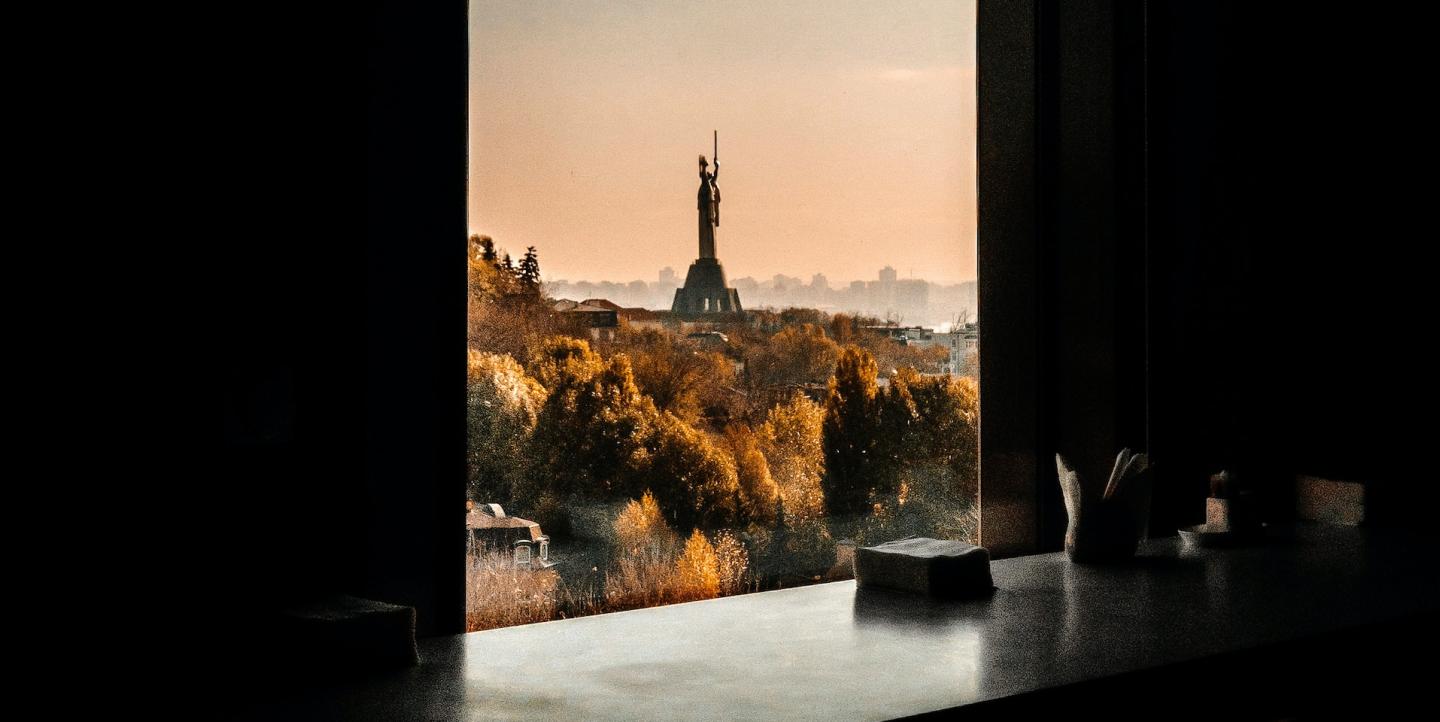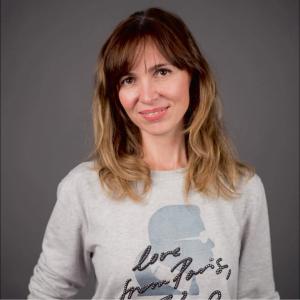In June, Melitopol Vesti resumed publishing after more than a year-long hiatus.
The site had ceased all operations in early March of 2022, just over two weeks after Russia launched its full-scale invasion of Ukraine, and after Russian forces captured the southern Ukrainian city of Melitopol. The newspaper’s final copies at the time were printed on February 23, 2022 – the last day of peace, recalled Mikhail Kumok, the publication’s director and editor.
At the start of the Russian occupation, the outlet used direct language: war is war, occupiers are occupiers. This lasted briefly, until the newsroom learned that the Russians were going to interrogate two of its journalists. “Direct all questions to our editor. We don’t know anything,” Kumok advised the journalists to say. They were released and left the occupied territory.
“On March 11, we suspended work due to a direct threat to my employees — dozens of people. Lives are more important than anything else,” said Kumok, who was soon forced to leave Melitopol, too. He received threats, and later the Russian occupiers came to his home and took away a computer tower and his apartment ownership documents.
“We completely stopped our work at the time. Then at the beginning of this summer we resumed. We believe in our victory and that we’ll soon return home. I have also returned to work, editing and preparing articles, and doing investigative journalism,” said Kumok.
Because Melitopol is largely Russian-speaking, Melitopol Vesti used to publish in Russian. Kumok has since decided to transition the site to publishing in Ukrainian. The editorial team works remotely today, and uses WhatsApp and other end-to-end encrypted apps to communicate with one another.
The journalists on the team rely on a variety of sources to carry out their reporting. The editors, for instance, monitor public web pages run by the Russian occupation forces and collaborators. “They often post important news. We check them through our own channels and only then do we publish,” said Kumok.
Kherson
Irina Ukhvarina works for Vgoru, a media outlet based in Kherson, a city in southern Ukraine that Russian forces occupied for more than eight months in 2022. Although Ukraine recaptured the city last year, it remains under regular artillery fire from the Russian army.
During the Russian occupation, Ukhvarina explained, people didn’t trust each other for fear they could be betrayed. This fear was alleviated with the city’s return to Ukrainian control, but another has taken its place: people are afraid to ask, “How are you?”
“It’s scary to hear that someone died, [a shell] flew into a house, or some other misfortune has taken place,” she said.
Ukhvarina and her colleagues never publish photos from locations that have been fired upon; they don’t even publish details after the fact. Any photos they publish offer no reference to location, so as to avoid helping the Russian army direct its fire.
She and her colleagues don’t write about any events in the city, either, including the distribution of humanitarian aid. They want to prevent Russian troops from finding out about crowded places; otherwise, the area could become a target.
Ukhvarina pointed to the intense shelling of the city center and a local supermarket that killed seven people in December 2022: “I had written that our favorite store has finally opened in Kherson – a meeting place for residents who hadn’t seen each other for almost a year. The next day, after publication, [it was shelled]. Since then, we haven't announced any events in the city.”
Reporting under fire
Journalists in occupied areas must operate differently from their colleagues working in combat zones or liberated areas like Kherson that may still be under attack, explained Andrii Ianitskyi, editor of the Institute for War and Peace Reporting in Ukraine.
Journalists reporting in occupied territories should do so anonymously and communicate only with people they trust via secure messaging apps, such as WhatsApp and Signal, and ProtonMail, Ianitskyi advised. They should also utilize disposable phone cards, and use names that can’t be tied to them.
Ianitskyi cautioned against taking photos or videos, especially of someone being detained. Although it’s relatively safe to photograph tourist sites it’s still best to be careful: keep in mind that intelligence services have surveillance cameras they can use to identify people.
Journalists working in combat zones can report more openly. Using a real name and photo, and accompanying bio, could help increase credibility, said Ianitskyi: “The more a reader knows about a journalist, the more confidence in their material.”
It’s critical that journalists working in combat zones take first aid courses, and they should wear body armor and helmets with the label, “PRESS,” written on the equipment, to be easily identified by the Ukrainian military.
“At the beginning of the war, everyone suddenly became military journalists. But at the same time, practically no one had armor or helmets, much less knowledge about what to do when shelled or wounded. Further, many journalists who tried to get to the most dangerous parts of the frontlines were injured and could have been killed,” said Ianitskyi.
In Ukraine, a journalist reporting on the frontlines or in combat zones needs accreditation from the General Staff of the Ukrainian Armed Forces. It has become more difficult to obtain this accreditation, however, noted Ianitskyi. The military also often requires journalists to have an editorial assignment from a newsroom or written permission from the military unit’s press officer.
“Unfortunately, due to these difficulties, journalists may present themselves as volunteers who help people – while at the same time they film war stories. Often, everything depends on the personal contacts of journalists or fixers with military press officers,” said Ianitskyi.
Interactions between journalists and press officers can be complicated by the fact that the two positions have different goals, he added. Press officers, in addition to ensuring the physical safety of journalists, must prevent military secrets, such as troop locations, the availability of equipment and personnel numbers, from being disclosed.
Journalists, meanwhile, document the realities of situations. Sometimes, they may inadvertently make sensitive information publicly available that harms the military. Ianitskyi highlighted a report by Forbes about Ukraine’s deployment of its 82nd Air Assault Brigade to the counter-offensive zone in Zaporizhzhia, after which the country’s deputy minister of defense, Anna Malyar, communicated that Russian troops carried out five airstrikes on the military unit in a single day. Malyar titled her post, “The Price of Headlines.”
After Ukraine recaptured northern regions of the country from Russia, the war’s frontlines narrowed significantly and it became easier for the General Staff to control journalists’ work. All film crews working at the front have been assigned a press officer, and traveling to combat zones without body armor and helmets has been prohibited. Journalists are dying less frequently, as a result.
Relations between journalists and the army remain strained, however, said Ianitskyi. The military often changes the rules of operation in a combat zone without consulting journalists. Sometimes their decisions don’t seem to be sufficiently reasoned. For instance, journalists in Ukraine recently took issue with the introduction of three zones to regulate their work at the frontlines. They can work freely in green zones; yellow zones require that journalists be accompanied by a press officer; and journalists are prohibited from working in red zones.
The new rules were introduced not to complicate the work of journalists, said Natalya Humeniuk, the head of the army’s press center in southern Ukraine, but rather “for the proper organization of work taking into account the needs of the army.”
“Journalists always want more freedom, and that’s normal,” concluded Ianitskyi.
Photo by Kyrylo Kholopkin from Unsplash.
This article was originally published on IJNet Russian. It was translated into English by Nick Flynt.


